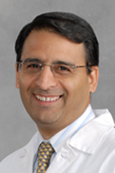Author Interviews, Cost of Health Care, Surgical Research / 12.10.2015
Ambulatory Surgery Centers Have Cost Advantage Over Hospital Care
 MedicalResearch.com Interview with:
Kathleen Carey, Ph.D.
Professor
Department of Health Law, Policy and Management
Boston University School of Public Health
Boston MA 02118
Medical Research: What is the background for this study?
Dr. Carey: Ambulatory surgery centers (ASCs) are a growing alternative to hospital outpatient departments (HOPDs) for patients undergoing surgeries that do not require an overnight stay. The number of ASCs increased 49% between 2002 and 2012 and now exceeds the number of acute care hospitals.
Most Ambulatory surgery centers are specialized in the areas of gastroenterology, ophthalmology or orthopedic surgery. Because of specialization and limitations on the services they provide, it generally is assumed that ASCs can perform the same procedures at a lower cost than HOPDs. In fact, Medicare reimburses ASCs at a rate of roughly 60% of what they reimburse HOPDs. Yet since Medicare doesn’t require ASCs to submit cost reports, this policy is based on little information about the relative costs of ASCs and HOPDs.
The cost advantage may offer an explanation for rapid ASC growth. But financial margins are explained by both costs and revenues, and high returns on investment might also be explained by high prices. Here there is even less information, as prices negotiated between commercial health insurers and providers are ordinarily considered highly confidential. In this study, I took advantage of MarketScan Commercial Claims and Encounters, a large national database distributed by Truven Health Analytics that contains information on actual prices paid to ASCs and HOPDs to explore the revenue side of ASC expansion.
Medical Research: What are the main findings?
Dr. Carey: For this study, I examined six common surgical procedures that are high volume, provided in both ASCs and in HOPDs, and represent the three main ASC specialties: colonoscopy, upper GI endoscopy, cataract surgery, post cataract surgery (capsulotomy), and two knee arthroscopy procedures. Over the period 2007-2012, the ratio of what insurers paid ASCs compared to HOPDs differed considerably across specialty: For colonoscopy and endoscopy, ASCs received 22% less than HOPDS. But for cataract surgery, the payments were relatively comparable, and for knee arthroscopy payments to ASCs exceeded payments to HOPDs by 28% to 30%. Private insurers paid ASCs considerably more than Medicare did – anywhere from 25% more to over twice as much for post cataract surgery.
The other interesting finding was that HOPD prices grew much faster than ASC prices between 2007 and 2012. While some Ambulatory surgery centers prices grew more than others, ASC prices on the whole rose roughly in line with medical care prices generally. HOPD prices for these services, however, rose from 32% to 76% during the same time period.
(more…)
MedicalResearch.com Interview with:
Kathleen Carey, Ph.D.
Professor
Department of Health Law, Policy and Management
Boston University School of Public Health
Boston MA 02118
Medical Research: What is the background for this study?
Dr. Carey: Ambulatory surgery centers (ASCs) are a growing alternative to hospital outpatient departments (HOPDs) for patients undergoing surgeries that do not require an overnight stay. The number of ASCs increased 49% between 2002 and 2012 and now exceeds the number of acute care hospitals.
Most Ambulatory surgery centers are specialized in the areas of gastroenterology, ophthalmology or orthopedic surgery. Because of specialization and limitations on the services they provide, it generally is assumed that ASCs can perform the same procedures at a lower cost than HOPDs. In fact, Medicare reimburses ASCs at a rate of roughly 60% of what they reimburse HOPDs. Yet since Medicare doesn’t require ASCs to submit cost reports, this policy is based on little information about the relative costs of ASCs and HOPDs.
The cost advantage may offer an explanation for rapid ASC growth. But financial margins are explained by both costs and revenues, and high returns on investment might also be explained by high prices. Here there is even less information, as prices negotiated between commercial health insurers and providers are ordinarily considered highly confidential. In this study, I took advantage of MarketScan Commercial Claims and Encounters, a large national database distributed by Truven Health Analytics that contains information on actual prices paid to ASCs and HOPDs to explore the revenue side of ASC expansion.
Medical Research: What are the main findings?
Dr. Carey: For this study, I examined six common surgical procedures that are high volume, provided in both ASCs and in HOPDs, and represent the three main ASC specialties: colonoscopy, upper GI endoscopy, cataract surgery, post cataract surgery (capsulotomy), and two knee arthroscopy procedures. Over the period 2007-2012, the ratio of what insurers paid ASCs compared to HOPDs differed considerably across specialty: For colonoscopy and endoscopy, ASCs received 22% less than HOPDS. But for cataract surgery, the payments were relatively comparable, and for knee arthroscopy payments to ASCs exceeded payments to HOPDs by 28% to 30%. Private insurers paid ASCs considerably more than Medicare did – anywhere from 25% more to over twice as much for post cataract surgery.
The other interesting finding was that HOPD prices grew much faster than ASC prices between 2007 and 2012. While some Ambulatory surgery centers prices grew more than others, ASC prices on the whole rose roughly in line with medical care prices generally. HOPD prices for these services, however, rose from 32% to 76% during the same time period.
(more…)



























